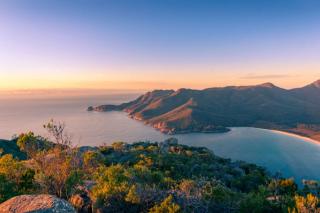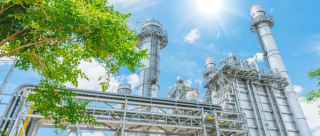
Reducing offshore wind capex by accurate cable modelling
- Post Date
- 03 May 2024
- Read Time
- 5 minutes

The long-term sustainability of offshore wind farm cabling is vital, as costs associated with replacing a damaged cable due to overheating likely to run into millions of pounds.
Through accurate cable modelling, huge cost-efficiency can be achieved by ensuring that the number and size of cables used are exactly appropriate for the surrounding environment in which the cables are installed and the intermittent nature of wind generation and potentially severe weather conditions.
By using Distributed Temperature Sensing (DTS) systems to monitor cable temperatures during operation, it has become clear that the traditional modelling method of Steady State thermal rating calculations routinely over-estimate the size and types of cables required for the operation of wind farms.
Why cable reliability is vital for offshore wind farms
Cabling is the vital mechanism that transmits the electrical current enabling a wind farm to operate. As a result of electrical resistance, heat is generated through the cable. The cable needs to be able to effectively manage the heat that is generated during the operational life of the wind farm.
Therefore, it needs to be able to dissipate heat in an effective way so that it can operate within a defined temperature limit. If the cable exceeds the defined maximum operating temperature, accelerated aging and thermal runaway can occur. This will either shorten its life or lead to its failing completely.
The heat which is created through the cable is determined by electrical losses. The ability to dissipate the heat is determined by the cable construction and materials but also critically, the installation conditions including the type of soil the cable is laid in, burial depth and the proximity to other heat sources. The electrical losses that result in cable heating are directly proportional to the current in the cable. The highest power levels are transmitted by the cables during peak wind events associated with significant storms.
With big offshore projects there is no other method of exporting energy from the wind farm. If your main cable connection goes down, then the entire wind farm is a stranded asset. As well as this, there are accessibility issues to enable the laying or repair of cable on the seabed.
Appropriate vessels are limited in number, human resources with appropriate skills are required, and the cable itself needs to be taken to that environment, repaired, and tested. This process can take weeks or even months. The cost of repairs can easily run into millions of pounds, let alone the loss of income from a stranded wind asset. This means the reliability of the performance of that cable in operation is crucial.
Differing dynamic rating approaches offer different solutions
There are three recognised techniques when looking to model the level of energy that is generated through a wind farm and transmitted by the cable system. As we have already mentioned, Steady State analysis is the traditional method that has been used for determining cable size on wind farms.
This is a conservative initial design approach, which uses large cable sizes based on the maximum output of the wind farm.
An alternative approach, known as Dynamic Thermal Rating, uses digital tools to analyse historic weather and ocean data from the past 15 to 25 years from the location in which the wind farm is planned.
Real-life significant wind events from that time period are assessed for their strength as well as how long they went on for. This algorithmic tool also considers the detail of the soil or sand in which the cable is embedded and the burial conditions, in order to assess the time it will take to heat up.
Taking all these factors into account, the optimum cable size can then be determined. This is highly cost-efficient as often a smaller cable is advised with a significantly lower cost to the developer than would be recommended through the Steady State method. We would expect savings of up to 30% in capital outlay.
As an example, our team was involved in the cable modelling for an offshore wind farm project in East Asia. By using Dynamic Thermal Rating to model their cable systems, a number of proposed export cable circuits were eliminated from the initial concept saving the developer tens of millions of dollars in capital outlay.
This shows there are real and tangible savings to be made, particularly given the project in East Asia was relatively small in scale when compared to the size of many wind farms that are now being developed.
In addition to this method of design analysis, there is also Finite Element Analysis (FEA) which involves greater levels of data and iterative analysis, with specific tools and software to assess the size of cable required. This is particularly important for situations where soil conditions and the installed environment are extraordinarily complex. Consequently more in-depth data is required to determine the size of cable needed.
Currently, a CIGRE working group (CIGRE is a global expert network that supports the development of standards and approaches to complex power system challenges) is considering Dynamic Thermal Rating as a way of modelling cable for offshore projects. Many in the sector expect that the group will publish a technical brochure in the coming months, which is the first stage in a process whereby a particular approach becomes an industry standard.
With the cost efficiencies generated by Dynamic Thermal Rating, and the expert analysis that ensures it is effective and reliable, we can expect this approach to become much more prevalent in the coming years.
The size of offshore wind farm projects is continuing to grow exponentially as climate change and efforts toward net zero emissions have become an international priority. This means the cost savings of taking on this new approach to cable modelling will be equally exponential.
This will have huge implications for wind farm profitability and ultimately the attraction of their use as an energy source now and in the future.
This article featured in Energy Digital Magazine.

